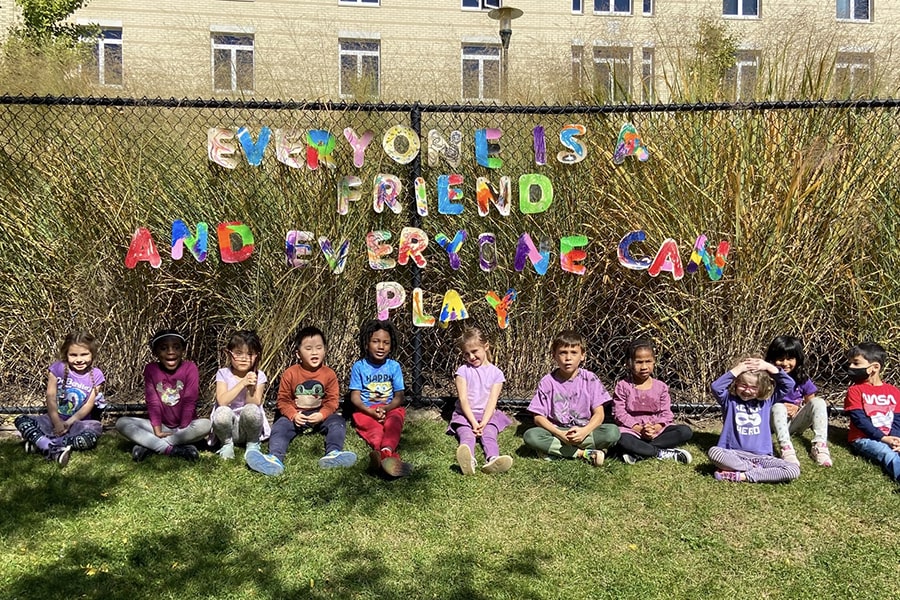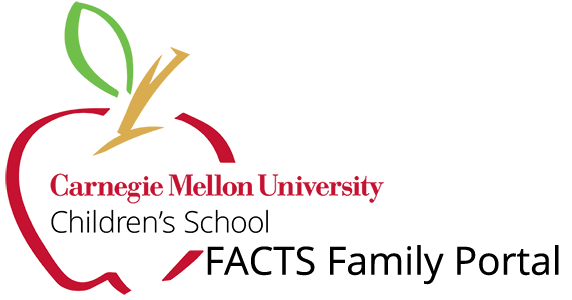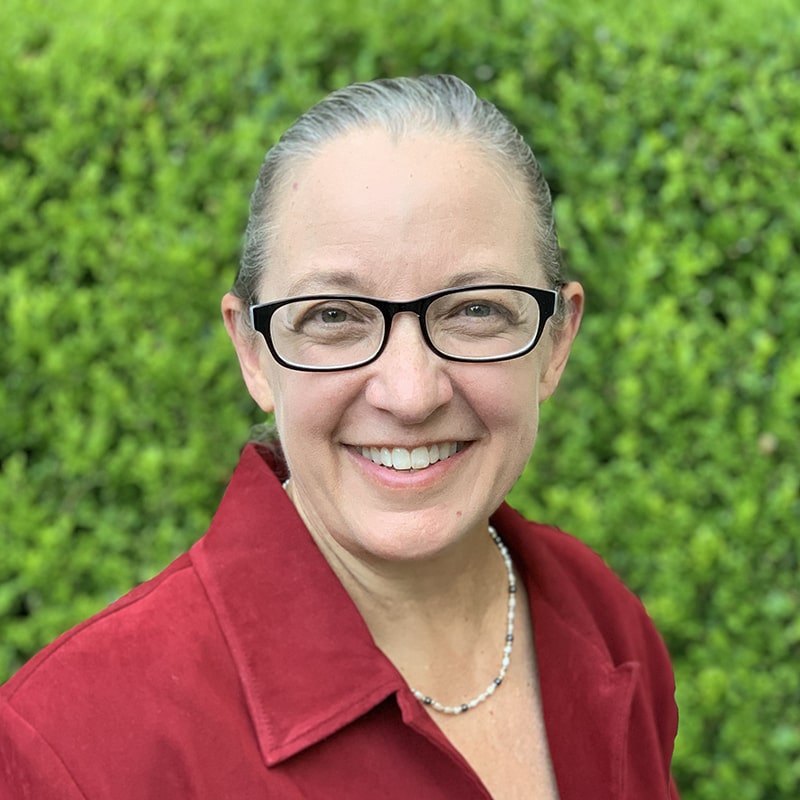October 2022: Timeless Priorities
As the coronavirus pandemic becomes endemic, I’ve heard people talking about the “new normal”. Certainly, there are ways in which we can never “get back to normal”, as in … back to the way things were in 2019. At the same time, many have emerged from their unique pandemic experiences with a clearer sense of what matters most for them. Perhaps these reflections can lead to more intentional focus on the “new important”.
The two weeks of Children’s School professional development before school started were refreshing for our educators and administrators because we had the time and space to ponder our own current priorities for all the learners in our laboratory school context: ourselves, our colleagues, the children, the families, the undergraduates, and the researchers. One provocation we began using for our discussions is a 2021 book by Gregg Behr & Ryan Rydzewski, When You Wonder, You’re Learning: Mister Rogers’ Enduring Lessons for Raising Creative, Curious, Caring Kids. Though Fred Rogers’ hosting of Mister Rogers’ Neighborhood (1968 to 2001) began half a century before the current pandemic, the book’s thesis is that his principles have now been proven effective by learning sciences research and repeatedly demonstrated via implementation in varied contexts for learners of all ages. For that reason, Behr and Rydzewski advocate that they become the central themes for our “new important”, particularly with respect to nurturing young children.
For the first time in Children’s School history, those entering our Preschool 3’s program have no memory of time before the pandemic. Even our Preschool 4’s children have experienced pandemic conditions for half their lives. They are also part of a generation of children who could spend their entire lives online (p. 5). In that context, the authors highlight six of Rogers’ priorities as central for “raising creative, curious, caring neighbors and citizens – people who can build stronger, more inclusive communities and a more just and loving world” (p. 7). I hope you are not surprised to learn that the school you have chosen for your children has been committed to this goal and these very priorities since our founding, which was also in 1968!
Six Priorities from Fred Rogers |
Children’s School Developmental Objectives |
| Curiosity | Discovery & Exploration |
| Creativity | Artistic Expression and Appreciation |
| Communication | Communication |
| Working Together | Interaction & Cooperation |
| Learning and Growing | Self-Esteem & Independence |
| Connection | Essentially the way all the above interact |
| PLUS Physical Capabilities / Health & Safety, which is in some ways prerequisite to all the above |
We invite you to partner with us for this phase of your children’s educational adventure. Together, we can help each one to thrive in the present and strive to reach their full potential in all the priority areas. In August of 2020, Joanne Rogers wrote the foreword for Behr and Rydzewski’s book, sharing “the simplest, truest thing” she knew. “Being there for each other and supporting each other is what it’s all about” (p. viii). In that spirit, we invite you to join us on this year’s Children’s School journey. In this column, I’ll explore one of the priorities each month and I encourage you to continue the dialogue with us, among yourselves, and with those in your caring circles.
November 2022: Curiosity
What makes you wonder? What questions prompt you to search with Google, phone a friend, or open a book? What did you learn from your exploration? Now consider when you are most likely to wonder and when you are most likely to pursue answers to your questions, or even let your curiosity lead you “down a rabbit hole” like Alice in Wonderland.
By choosing the title When You Wonder, You’re Learning (2021), Behr and Rydzewski foreshadow the primary priority for nurturing young children as that of fostering inquiry. They also cite research that curiosity is wired into the human brain. “Babies as young as nine weeks old tend to focus on what’s new and unfamiliar rather than what’s constant or routine” (p. 14). Before babies can talk, they request information by pointing at objects while looking to a caregiver with interest in their eyes. With the advent of language, toddlers progress quickly to the frequent query of “why?” Research by Susan Engel on children’s curiosity reveals that the more curiosity they report feeling, the more powerfully their brains are primed for learning (p. 18).
Since learners gravitate to the questions they ask, our role as educators is to create an environment with enough novelty, mystery, and challenge to spark questions. Educators prepare children to value and pursue their questions by modeling curiosity themselves. At the same time, distraction by too much novelty can lead to curiosity that erodes focus rather than prompting deep inquiry, and some explorations are not safe for young children. Thus, educators create predictable routines in an organized and child-safe space, while building secure relationships with children so that they are confident enough to explore.
To channel children’s curiosity, educators listen to children’s questions and enthusiastically respond to their ideas and hypotheses. We scaffold children’s thinking by helping them articulate, “I wonder … I think … I learned …” Also, research by CMU’s Dr. George Loewenstein shows that children “need to have some basic knowledge about a subject before they can develop a sustained interest in it” (p. 28), so our month-long thematic units and intentional connections with children’s background experiences provide that foundation.
At the Children’s School, we foster children’s Discovery and Exploration by designing indoor and outdoor opportunities for developing and testing theories about how things work in the world. Sand, water, light, and block play enhance children’s understanding of physical realities of everyday materials. Changing materials in the centers as new themes are introduced provides frequent catalysts for new experiments. Novel dramatic play areas offer safe spaces to explore human interaction, which can turn curiosity about people into empathy.
Parents can support curiosity in many of the same ways that we do at school, starting with modeling your own curiosity and inquiry processes, as well as purposefully listening to children’s questions. Provide space, opportunities, and materials for related inquiry, as well as arranging visits to public discovery centers where children can freely explore without fear of damaging materials or injuring themselves. Simply ensuring that children have unstructured time to choose and become engaged in their own play activities with basic, interesting materials can spark their questions and interest. Watch the classroom blogs for reports of the group inquiry happening at school so you can extend the learning at home. We invite you to share your own and your children’s questions with us so we can engage in learning together. When time is short, record questions for future adventures!
December 2022: Creativity
Where do you enjoy creativity in your life? When are your most creative moments? Do you find that your best ideas come when your mind wanders and you are free from worrying about what others think? Perhaps it’s when you are in the shower, walking the dog, or driving for long stretches on the highway.
In When You Wonder, You’re Learning (2021), Behr and Rydzewski prioritize fostering a balance of divergent and convergent thinking because solving today’s multifaceted problems, like world hunger, climate change, and systemic poverty, will “require creativity – the ability to generate new ideas and synthesize existing ones” (p. 46). They explain that young children are wired for creatively inventing “out of the box” ideas, largely because they have yet to be constrained by all of the “boxes” that society imposes on them. They recommend fostering creativity by promoting open-ended play with “the stuff of real life”, and they exemplify their ideas by talking about the purposeful Children’s Museum of Pittsburgh design. If you have not already visited or joined, I highly recommend the quality of play experiences children and adults of all ages will experience there, from the art studio and maker space near the entry, to the “garage” with lots of tinkering and building opportunities, to the water play area on the top floor.
To support children’s creativity, educators provide opportunities for such open-ended play by intentionally organizing spaces, materials, and time. We invite children’s creativity in the block areas, mud kitchen, sand table, water table, light table, art & writing center, and so on. Children also need to sense a climate of belonging with adults available as both guides and advocates for their creative efforts. At the Children’s School, we foster children’s Artistic Expression and Appreciation in visual arts, music, dance, and drama by emphasizing the creative process more than the product. Our indoor and outdoor “loose parts” centers demonstrate this principle by providing interesting and varied materials that children are free to arrange and rearrange as they wish. Though we may photograph their designs so they and others can reflect on them later, there is no pressure to be finished or to exhibit their work. Similarly, we invite children to explore music, dance, and drama in many ways and even to informally perform for classmates. We choose not to schedule formal performances where children may experience embarrassment or stage fright.
Behr and Rydzewski also highlight Mister Rogers’ emphasis on the labor that goes into creativity, which is often said to be “1% inspiration and 99% perspiration”. To embark on the hard work of innovation, children must learn to use age-appropriate tools and must build a relevant knowledge base as foundations for their innovation. That’s why educators explicitly teach skills for using art materials, Make Shop tools, musical instruments, etc. before offering the more open-ended opportunities. Similarly, in the context of thematic studies, they introduce new vocabulary and dramatic play materials, gradually increasing the options and complexity within the dramatic play centers. With all the arts, we also expose children to diverse models of artists from across cultures and generations, so they begin to appreciate a wide range of creative expressions.
Parents can support creativity in much the same way, starting with providing space, materials, and unstructured time for art, music, dance, and drama both indoors and outdoors. Showing that you value creativity by engaging in playful arts yourself is a wonderful model for children. Plus, creativity has health benefits important for parents. “Adults who do something creative at least once a day have been happier and healthier than their peers, an effect that sometimes lasts for days” (p. 68).
January 2023: Communication
As we consider making resolutions at the beginning of a new year, I hope that everyone who engages with young children will prioritize what Fred Rogers called deep listening and loving speech. In When You Wonder, You’re Learning (2021), Behr and Rydzewski emphasize the evolutionary survival and well-being benefits of being “hard-wired to communicate” (p. 73). Though many living things communicate in some way, language uniquely allows humans to “pass along knowledge, build on old ideas, and deepen our connections with other people” (p. 73). At the Children’s School, Communication is a key learning objective, so we aim to facilitate comprehension and expression skills beginning with oral language (listening & speaking) and progressing to written language (reading & writing). Similar emphasis on building communication skills at all levels of education is often justified by research showing strong correlations between communication skills and society’s valued outcomes, such as “relationship quality, academic success, job performance, and income” (p. 74).
When Behr and Rydzewski highlight Mister Rogers’ emphasis on deep listening, they describe being more interested in hearing others’ stories than telling our own, focusing on receiving more than reacting, and prioritizing presence more than problem solving. With children, connecting on their eye level, waiting for them to formulate their thoughts, and pausing to ensure they are finished before responding are all key elements for which to strive, especially when children may be feeling intense emotions. The Rabbit Listened (Cori Doerrfeld) is a powerful model of the empathy and kindness involved in deep listening, both for children and adults.
Loving speech is similarly focused with intention on the other, respecting that all feelings are valid and every emotion worthy of expression. The message of the words, together with supportive facial expressions and body posture, emphasizes acceptance, with no need to blame, shame, or otherwise jeopardize the communication with messages that further divide. Fred Rogers consistently encouraged adults to both listen and respond in ways that convey assurance that anything human is mentionable and anything mentionable is more manageable (p. 184).
To support children’s listening and speaking, educators plan the pace of the day so they can listen to children and support their efforts to communicate among peers. When problems arise, they aim to understand the message behind a child’s behavior before trying to change the behavior, and they scaffold children’s speech to help them build a repertoire of effective phrases. Educators choose books that model effective listening and speaking, as well as help children consider the consequences of ineffective approaches. When reading and reflecting on stories, they encourage children to pay attention to both the words and the other cues to their meaning, such as facial expressions. Classroom activities engage children in drawing to share their ideas on paper and invite them to dictate the message they want to convey. In these ways, we focus more on the intended expression than the detailed conventions of writing to help children appreciate the value of reading and writing. Then, as children express interest, we help them explore reading and writing of text. They often start with the most important words for them, like their own and their family members names, and messages like “I love you.”
Winter is a wonderful time for parents and other caregivers to support listening and speaking during extra snuggle time, as well as to encourage sharing of drawings or cards with messages of love and appreciation. Allow time, emphasize the process, and build relationships along the way.
February 2023: Collaboration
Launching the Whole School Unit on PERFORMING ARTS is a perfect time for both educators and families to consider the importance of collaboration in our lives because we broaden the unit design to include more partners, and also because success in all of the performing arts depends on strong collaborations.
In When You Wonder, You’re Learning (2021), Behr and Rydzewski cite research that even 18-month-olds are eager to help when their help is genuinely needed, even if they are otherwise occupied, and that humans are programmed to be collectively smart, such that group decisions are often better than the average of the individual ones. Fred Rogers stressed that what really matters is helping others shine too, even if it means that we slow our pace or change course. In a famous episode about work, Mister Rogers showed his audience what is behind the scenes of the studio when an episode is being filmed so that everyone could see the many talents and close collaboration needed.
One particularly radical aspect of Mister Rogers’ message across episodes was that “the more a team reflects the world’s diversity, the richer and more original and more enduring its output tends to be …” (p. 118). In both his choice of colleagues and guests, he treated differences as unique assets, with deep respect for every individual’s dignity, worth, and contributions. He always sought to build bridges instead of walls by finding ways to cooperate, compromise, and collaborate.
At the Children’s School, our Interaction & Cooperation learning objectives include promoting children's social skills for effective adjustment to school, group participation, classroom citizenship, and peer interactions. As young children develop from age 3 to 5, they are increasingly able to synchronize their conversation and action with others, which facilitates moving from parallel or associative play to true cooperative play and collaboration on projects. These progressively coordinated interactions present opportunities to understand fairness, consider others’ perspectives, respect the group process, and learn to negotiate, compromise, and resolve conflicts.
 To support children’s effective interaction and cooperation, educators model collaboration in their classrooms, as well as throughout the school with administrators, researchers, undergraduates, etc. They also address challenging issues directly when they arise in the classroom, such as when some of the Preschool 4’s recently started making signs that no girls were allowed in certain play spaces. The educators used an intentional sequence of calm and honest discussions with related activities to help shift the narrative to “All Are Welcome”. At all times of year, we purposefully choose age-appropriate books that show “every kind of person excelling in every kind of role” (p. 124).
To support children’s effective interaction and cooperation, educators model collaboration in their classrooms, as well as throughout the school with administrators, researchers, undergraduates, etc. They also address challenging issues directly when they arise in the classroom, such as when some of the Preschool 4’s recently started making signs that no girls were allowed in certain play spaces. The educators used an intentional sequence of calm and honest discussions with related activities to help shift the narrative to “All Are Welcome”. At all times of year, we purposefully choose age-appropriate books that show “every kind of person excelling in every kind of role” (p. 124).
We aim to build an environment of psychological safety with deep trust and mutual respect so that everyone feels safe to be themselves, seek clarification, voice dissent, and ask for help. The examples of such learning communities in Behr and Rydzewski’s chapter include Pittsburgh organizations, such as the Global Minds Initiative at Taylor Allderdice High School, striving to choose inclusivity as they seek to repair the world by building positive, diverse communities. The Performing Arts unit offers both models and opportunities to practice collaboration, with everyone contributing their diverse talents to enhance both process and performance. We look forward to your engagement with us as we continue to partner in our children’s educational journey.
March 2023: Learning & Growing
In When You Wonder, You’re Learning (2021), Behr and Rydzewski named their chapter on learning and growing with a quote from Fred Rogers’ song “You’ve Got to Do It”. “It’s you who have to try it and it’s you who have to fall (sometimes)”. Like Calvin Coolidge, they go on to claim that talent, genius, and education are never enough for success without persistence, but they go deeper to recognize that not everyone has the same conditions of permission and privilege that make persistence possible. Fred Rogers reflected that “part of his success had come from pursuing different interests without having to worry about where they led or whether they’d become a career” (p. 137).
Many of the conditions for effective learning and growing begin with relationships that provide a sense of safety and nurture that is a necessary context for persistence, or what some researchers and educators are calling “grit”. Learning scientists have found the best learning comes under conditions of “desirable difficulties” with just the right amount of productive struggle (i.e., not too much or too little). Similarly, learners are most motivated to push themselves to achieve when they have a “growth mindset” rather than a “fixed mindset”, meaning that they view their abilities as not set in stone but rather malleable with consistent effort to embrace challenges, learn from mistakes, attend to feedback on performance, etc.
At the Children’s School, some of our Discovery & Exploration objectives relate to fostering children’s self-directed, engaged learning with a growth mindset. We explicitly support children’s focus and concentration, planning, learning from mistakes, etc. as they strive to master new skills.
Our Self-Esteem & Independence learning objectives encourage each child’s growing willingness to risk trying new things, regulate their bodies and emotions, and ask for help appropriately. As young children develop from age 3 to 5, they develop increasing competence in caring for their own bodies, as well as confidence in managing the routines and activities at school and home. They gradually shift from describing themselves with only physical features to understanding themselves as having particular interests and acquiring new abilities. That’s why it is essential that our explicit and implicit messages to them reflect the approaches to learning described here.
To support children’s effective learning and growing, educators model a growth mindset regarding their own learning, explicitly acknowledging our mistakes and efforts to improve with help from others. As children strive to learn new skills that require lots of practice, we help them use the words “not yet” to talk about tasks they cannot yet accomplish on their own. As Lisa Cox and Lori Hockema say in their children’s book Not Yet, “Are they there? Not yet. They’ll get there, you bet.” Taking a growth mindset approach also means that we offer lots of low-pressure opportunities to practice important skills with our minds, our words, and our bodies. By focusing first on building trusting relationships, we aim to build the “kind of community that enables difficult work” (p. 168) and then support all the learners here in striving for the next level, whatever that may mean for them.
Many of the same strategies can be used at home to support learning and growing. In addition, Behr and Rydzewski suggest trying “Saturday experiments” (p. 170), which are “deliberate yet pressure-free opportunities to try something new”. Our Family Performing Arts Adventure is just such an opportunity for families to try singing new songs together, making ribbon dancers to use in a dance party with varied music, creating puppets for telling original stories, etc. We hope to see you there!
April 2023: Connection
In the final chapter of When You Wonder, You’re Learning (2021), Behr and Rydzewski describe the challenge of human evolutionary wiring. Connection is one of our most basic human needs and is “as essential to our well-being as food and water” (p. 173). Human bonding draws us together, striving for belonging and safety to be ourselves within the group. At the same time, the evolutionary need to quickly judge friend vs. foe has led to the surprisingly early emergence of the “us versus them” mentality. Researcher Kang Lee noted “evidence of racial bias among six-month-olds, when babies begin to associate faces from their own race with happy music and faces from other races with sad music” (p. 176). Slightly older infants preferred puppet show characters who shared their own taste preferences and those who harmed dissimilar characters. Essentially, while evolution has prepared us for deep connections, we are not naturally equipped for the inclusion necessary for peace in today’s diverse world, or as Behr and Rydzewski say, “for relating across our human differences as equals” (p. 177).
Fred Rogers’ Neighborhood offered purposeful lessons on building a kind and inclusive community, both in real life and in “make believe”. Acceptance and inclusion were the explicit goal in the neighborhood atmosphere “that allows people to be comfortable enough to be who they are.” Remember the opening message of belonging and worth for each child expressed in the words, “I have always wanted to have a neighbor just like you” (p. 184). The storytelling in each episode helped the audience learn the stories of others and, thus, better understand their own, all of which fosters empathy, which can then broaden our view of others as our neighbors.
 Many of the conditions for deep connection begin with kindness, which is why our primary emphasis at the Children’s School is to “Be a kind friend.” We reinforce that goal in our deliberate reference to each other as “friends” (as in, “The kindergarten friends …”). It’s also why we say, “Everyone is a friend, and everyone can play.”
Many of the conditions for deep connection begin with kindness, which is why our primary emphasis at the Children’s School is to “Be a kind friend.” We reinforce that goal in our deliberate reference to each other as “friends” (as in, “The kindergarten friends …”). It’s also why we say, “Everyone is a friend, and everyone can play.”
Similarly, our ability to achieve any of the goals we set at the Children’s School starts with the relationships we build, among our team, with all our partners on campus, and with our children and families. There are many simple, but intentional ways that we forge these connections, starting with rotating the educators and administrators who greet children each morning with a warm smile and personal welcome. Seating arrangements for snack and lunch are also purposely varied so that the children have opportunities to build broad networks of peer relationships. We offer many opportunities for children to share their perspectives and hear others, as well as to observe the teacher recording each idea while affirming its value.
The final weeks of the school year afford many opportunities for deepening connections with and among families, starting with parent-teacher conferences and the year-end celebrations. We hope you’ll commit the time to engaging with us and each other so that we can together contribute to building a caring and inclusive learning community at the Children’s School.
May 2023: Connection
In this series of articles, I have reflected on Fred Rogers’ timeless priorities for “raising creative, curious, caring neighbors and citizens – people who can build stronger, more inclusive communities and a more just and loving world” (p. 7). In presentations at the National Coalition for Campus Children’s Centers (N4C) and the International Association of Laboratory Schools (IALS) conferences, Mrs. Sweet, Mrs. Bird, and I have shared our educators’ reflections on Behr and Rydzewski’s 2021 book, When You Wonder, You’re Learning, as instrumental in our steps toward “the new important” in the current global context. Interestingly, these priorities align beautifully with the indigenous perspectives for repairing the world, as shared in a keynote address at the IALS conference by Dr. Niigaanwewidam Sinclair, who is Anishinaabe and a professor in Native Studies at U. Manitoba, Canada. In their epilogue, Behr and Rydzewski stress that, “What was ‘normal’ yesterday doesn’t have to define tomorrow” (p. 208). Similarly, Sinclair emphasized that laboratory schools are ideal places to begin adopting Anishinaabe ways that can bring peace and justice to all. If fact, he encouraged us that, in many ways, we have already begun.
Dr. Sinclair emphasized that the Anishinaabe accept the mystery in the world and aim to “reconcile the why?”. In many ways, this approach resonates with the priority on Curiosity, but the Anishinaabe attention to the mysteries of nature yields a deeper sense of responsible and sustainable inquiry. With respect to Learning and Growing, the Anishinaabe identify the most important teachers as the elders and the children, which is why they dedicate so much time to intergenerational interactions. Such interactions promote the “deep listening and loving speech” that Rogers noted as so important to Communication and helps children build the trusting relationships that both the Anishinaabe and Rogers recognized as an essential foundation for learning. Similarly, both the Anishinaabe and Rogers emphasize the principle of loving and being loved as central to human Connection. The Anishinaabe go a step further, however, by emphasizing the need to reconnect to the land, by taking the time to listen, watch, and share with both the land and with others.
According to Dr. Sinclair, the Anishinaabe think that each individual’s “job is to be a gift giver”. For Rogers, each of us can use our Creativity to innovate in ways that enrich the world for everyone. Because everyone has a gift to give, the Anishinaabe clans are egalitarian, using “the circle” to share everyone’s ideas and make decisions. In much the same way, Rogers emphasized Collaboration to build bridges through cooperation and compromise, using diversity as a strength to forge “richer and more original and more enduring” (p. 118) ways to do the difficult work of repairing the world. In addition, life, love, and learning are all intertwined in the Anishinaabe community because they all take place within the same lodge. In a way, that notion is similar to Fred Rogers’ “neighborhood”, both the real one and the “Neighborhood of Make Believe.”
Now, it is our job to contribute our unique gifts to help build the neighborhood, the Children’s School neighborhood, the Pittsburgh neighborhood, or whatever neighborhoods we call our home for life, love, and learning. Behr and Rydzewski close by saying that, “Every day … parents, educators, and young people themselves are doing what Rogers did – combining timeless ideas with new ways of learning to make the world more accepting, more compassionate, and more humane” (p. 209). Perhaps the summer months will give us opportunities to reconnect with each other and with the land in ways that help us acknowledge with gratitude the gifts we have received and have to offer.





